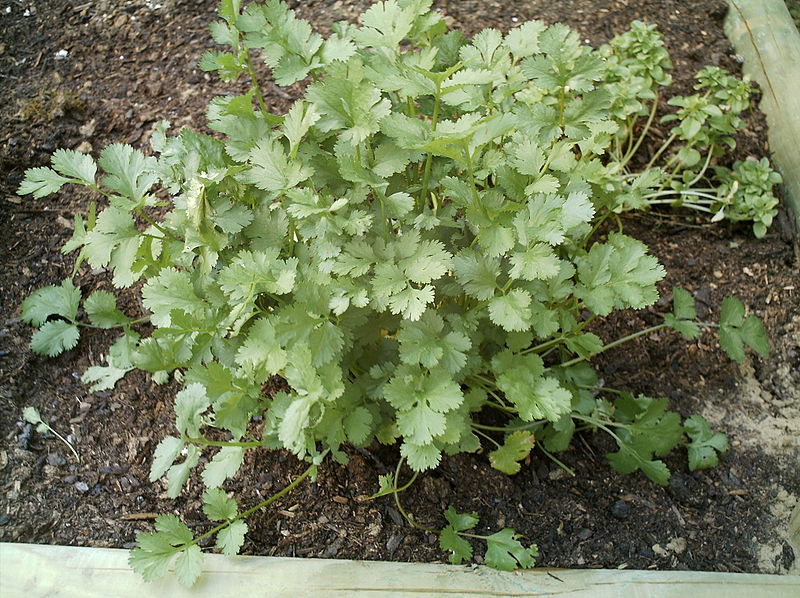Cilantro (Coriandrum sativum), whose seed is known as coriander, is an annual plant which is native to a region spanning southern Europe, northern Africa and southwestern Asia. The leaves are also known as Chinese parsley to distinguish it from Italian parsley. Cilantro has been in cultivation for thousands of years. There is evidence that it was grown in Greece during the Bronze Age.
In Europe, the plant is known as coriander while in North American, it is called cilantro which is the Spanish word for coriander. The Spanish colonized Central and South America as well as parts of what is now the southwestern US. They introduced cilantro and it has become a mainstay of Mexican cooking. The English settlers of North America brought over the seeds, used as the spice coriander, in 1670.
In addition to Mexican cuisine, the fresh leaves are used extensively in Indian, Thai, and Chinese dishes. Cilantro leaves are used fresh because they lose their flavor when dried. The seeds (coriander) are used in Indian cuisine and when roasted, eaten as a snack. In Germany and South Africa, the seeds are used in pickling vegetables.
People are genetically predisposed to love or hate cilantro. Those who like it say it tastes like lemon or lime while those who don’t like it says that it tastes of soap or something rotten. I am one of those who tastes soap when eating cilantro. I use it sparingly in dishes like salsa which contain ingredients with strong tastes which mask the unpleasant (to me) taste of cilantro.
Cilantro plants reach 20 inches in height in full sun and well-drained soil. They are a cool season plant. It is best to direct sow the seeds in your garden in the very early spring. If you prefer plants, you can start seed indoors two weeks before your last frost date. Sow the seeds ¼ inch deep. Germination should occur within 7 to 10 days. Transplant your seedlings into your sunny garden after your last frost. The leaves will be mature enough to harvest in three to four weeks.
You can continue to sow seeds in your garden every two to three weeks until summer. Cilantro bolts, or flowers, when temperatures rise above 75⁰F. Deadhead your plants to prolong production for as long as possible. Until summer, you can harvest the leaves continuously as long as you don’t remove more than one third of them at a time. Use them fresh because they lose their flavor when dried. When using them in cooking, add them at the end of cooking because heat will also destroy the flavor.
Once the heat of summer sets in and your plants bolt, you can either harvest the seed for use as a spice or to save for another crop in the fall. When the seed pods start to turn brown, it is time to harvest. Place the pods in a paper bag to continue ripening. Cut slits in the bag to ensure good air circulation while your seeds are drying.
Seeds that will be used in cooking should be stored in a tightly sealed container in a cool, dry, dark place. If you plan to use the seeds to plant in your garden, store them in your refrigerator.
You can sow a second crop of cilantro in the fall the same way that you sowed your seed in the spring. Even easier is to allow the plants from the spring sowing to go to seed and naturally drop their seeds in your garden to self-sow a second crop. The seeds will germinate at the proper time in the fall.

